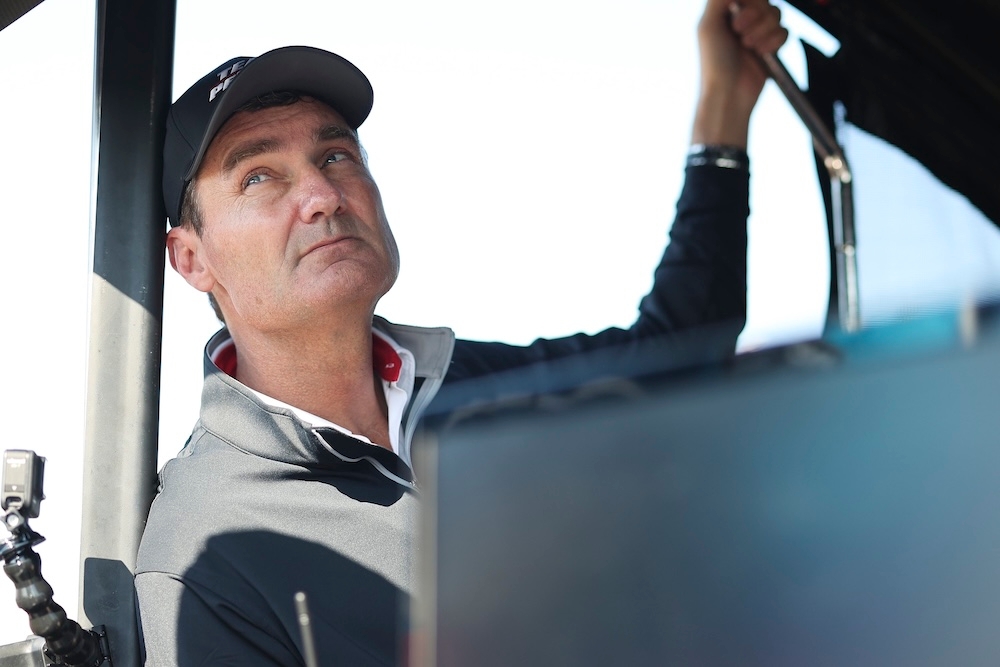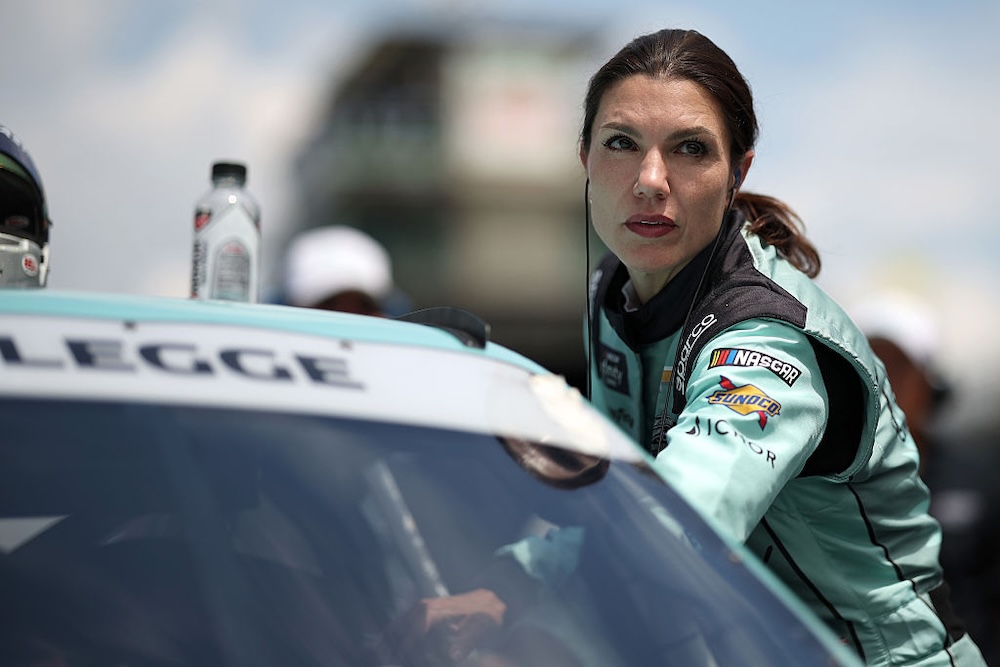Welcome to the RACER Mailbag. Questions for any of RACER’s writers can be sent to mailbag@racer.com. We love hearing your comments and opinions, but letters that include a question are more likely to be published. Questions received after 3pm ET each Monday will be saved for the following week.
Q: I’m happy with the buy-in from Fox. Now with the help of Fox, my hope is that we will finally get a FAST (Free Ad-supported Streaming Television) channel. In my mind, anything that puts IndyCar races, past and present, and their sponsors in front of fans or interested people is a positive.
I’m hopeful this buy-in will bring new manufacturers in and keep Honda for the 2027 season and Honda committing to the new formula in 2028. But if that doesn’t pan out, why not approach GM with branding all engines with their car brands? Chevrolet vs. Cadillac vs. Buick. I know it’s not true competition for the brands, but it is advertising for GM and competition for viewers.
Deanna
MARSHALL PRUETT: I’d guess my wife and I spend 50 percent of our viewing time on FAST channels (SNL Vault is our go-to. The F1 channel gets a lot of attention along with Midsomer Murders, GLORY kickboxing, and the Transformers channel…OK…most of those are mine…).
I often think of the same thing – I’d love to see IndyCar and IMSA FAST channels – because it might become 100-percent viewing.
The buy-in is a cause for optimism, but this new marriage is just that – a new marriage. It needs time to develop and hopefully become a powerhouse of a union. But it isn’t today, and nor will it be tomorrow from a return on investment standpoint. For IndyCar to become a more valuable sports entertainment league, it needs to put up the numbers to support that notion, and not for a moment, but for a few years. If the season-long audience average of 1.4 million today turns into 2.8 million in 2027, it’s a transformational happening.
Manufacturers and big corporate sponsors respond to serious numbers. Strip the 7 million Indy 500 viewers from the average, and it settles to a much smaller average figure. Get the non-Indy numbers to rise appreciably, at all of the races, and that’s where the prosperity comes in.
Q: Recent TV ratings angst aside, as someone who has had boots on the ground, how has IndyCar race weekend attendance been this year? While Iowa was obviously a disaster, and Thermal has a massive capacity limitation, feels like most of the sentiment I’ve read or heard has been that attendance elsewhere has been no worse than flat, and if anything, up and/or trending younger and more diverse, which seems to be the message that IndyCar is trying to push around its social media.
I would rather attendance be up so that there’s at least a product that can exist which can be promoted. Looking for positivity with so much attention on ratings, which is only part of the puzzle around the series interest.
I’ll be at the race in Milwaukee again and looking forward to it. I was there last year, and the new setup was 100x better than previous years, like a mini state fair. Nervous that a doubleheader on a long weekend last year was the reason it exceeded expectations.
Jim, Milwaukee
MP: Missed most of July’s races after our cancer screening at the end of June had a few unwelcome surprises, so I can’t speak to the majority of those, but my overarching observations have been of pleasant surprise as St. Pete, Barber, Long Beach, and so on, have been busy. Road America, possibly due to the ongoing heat wave at the time, looked a tiny bit down from the year before, but Laguna Seca, as I wrote right after the event, was a genuine surprise. It’s been a sad thing for years with only a small number of amazing diehards turning up, but it felt much busier from the opening day; the Friday looked like some of the Sundays in recent years. Truly didn’t expect it.
I have my fingers crossed for Portland this weekend because it needs a Laguna-like bump, and I’m anxious to see what the returns to Milwaukee and Nashville for the second year look like. Both exceeded my expectations in 2024, but both also clearly needed larger crowds. If they’re no better than last year’s showing, I’ll be concerned.
Q: On the Thursday afternoon before the Laguna Seca IndyCar race weekend, I was monitoring a flight tracking website. I noticed two Boeing 737 charters from Indianapolis land at the Monterey airport one after another. I assume these flights were IndyCar-related. Those two planes carry approximately 300 people. Who is on those flights, and how are they paid for?
Bob Gray, Canoga Park, CA
MP: Same chartered flights teams and IndyCar-related people have been using for many years. They’re paid for by the people/teams/organizations on the flight.
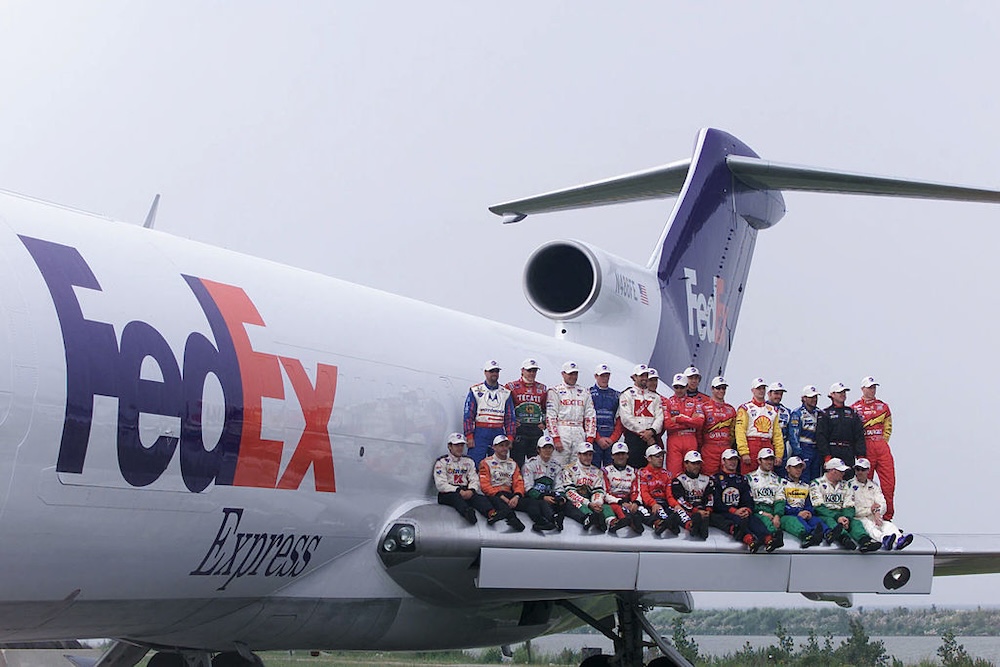
Safe to assume those are the cheap seats. Jonathan Ferrey/Getty Images
Q: As the Brits might say, I was gobsmacked when I heard that The Captain had sold a third of the series and of 16th & Georgetown to Fox. And even though $130 million ain’t chump change, I consider the Brickyard to be up there with Churchill Downs and Augusta National (i.e. if you have to ask the price, you can’t afford it).
But then the practical side looks at it like Shark Tank; you give up a bunch of equity in what isn’t making you money, and gain a partner with all the skills you are lacking. Brilliant move on Penske’s part. If this doesn’t move the needle in the next couple of years, then we all need to acknowledge that IndyCar doesn’t matter to the masses.
Fox knows media and exposure, and maybe the resistance of “going up against” the NFL, golf or whatever has scared promoters will go away, and IndyCar will remember the big set of cojones it had when beer and big tobacco made for the greatest racing on the planet.
Hope to run into you when next year starts.
Big Bird, St. Petersburg, FL
MP: Of the many things I hope to see evolve in the near future, it’s the schedule side and breaking free of the must-end-before-football-at-all-costs approach that has been smart, but has also limited IndyCar’s growth.
NASCAR’s big enough to race on Sundays during the NFL season and generate solid audiences. Not the case for IndyCar for decades, so stopping early each year has been wise. But with Fox as a new co-owner, there’s no need for IndyCar to be hemmed in to traditional Sunday run times once we get into September and beyond.
If teams are willing to go along with an experiment, you could see weeknight slots and other creative ways to push IndyCar into the last quarter of the year without having to go head-to-head with the NFL and get stomped.
With Cup and F1 racing into November to early December, it’s a period where racing fans keep tuning in. Once IndyCar goes dark after Aug. 31 this year, the series is silent and forgotten for two to three months while fans are locked in elsewhere. IMSA runs to the second week of October. It all points to a cool opportunity for IndyCar’s new co-owner to use its network to perform a calendar jailbreak for the series.
Q: Really loving my journey into IMSA this year, and that was a cracking race at Road America. But why does the yellow flag take so long?
Anyway, good to see RLL winning after they’ve lost the BMW contract for next season etc., though I’m sad to see where Tom Blomqvist and Nick Tandy finished.
So glad I have discovered IMSA/WEC; it has been a nice replacement for F1.
Dan Mayhew
MP: The races with all four classes can be a lot to absorb when there are frequent full-course cautions at the longer tracks like Road America, Daytona, and Sebring where the time it takes to complete a yellow lap is significant.
So you get the long lap to start with at pace car speeds, and then it’s the full pit cycle process that adds a bunch of time to the caution. First it’s the prototype classes, which get top priority, and after they’re done, the pits open for the GT classes. And then there’s the inevitable setting of the correct restart order because some cars are either out of position or some stayed out and the 40-plus cars behind the pace car aren’t in the right sequence. So that can add more laps to get rectified.
Thankfully, there’s a rule that triggers a “short caution” if the full all-classes pit cycles were done so you don’t have to deal with the same extended procedural routine; however long it takes to solve the crash and cleanup or whatever it is, is done as quickly as possible and then it’s back to racing.
I wish I could say this is a new thing but it isn’t. I’d love to see some ideas on how to slash the long procedure-extended cautions in half.
Q: In the Laguna Seca race I don’t recall seeing any sweepers dispatched during the yellow flag laps. I noticed that after lap 64 of 95 laps the top three positions didn’t change. I believe this is because so many marbles had built up that it made passing very difficult.
Did they have street sweepers at Laguna Seca, and if not, why not?
In my view, the build-up of marbles (effectively reducing many of the IndyCar circuits to a single lane before the half-way point of many races) is the number one factor detracting from the entertainment value of IndyCar racing.
Kevin P., Los Angeles, CA
MP: I don’t recall sweepers at Laguna Seca.
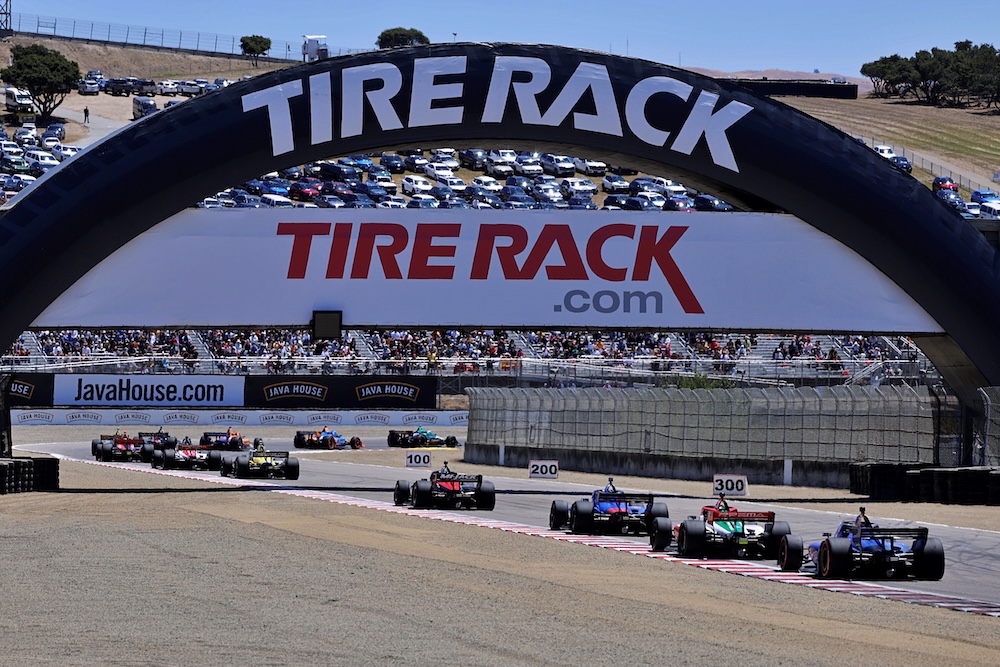
Not a sweeper in sight. Paul Hurley/IMS
Q: Great to see Road America deliver healthy crowds again. I grew up around IMSA and am a pretty dedicated lifelong fan. It’s fun to see the current level of interest and momentum.
Saying that, I feel like IMSA is pressing its luck with just how much unnecessary time under yellow fans will accept before they find something else to do. Rather than just spewing frustration, I’d rather ask for clarity on what their logic is for how they handle yellows. Is a modification to their current procedure a talking point?
I attended the round in Watkins Glen where the caution periods were very tiresome, and watching Road America at home, I gave up and went to the YouTube race highlights later. I’m more than a casual fan and if I’m throwing in the towel in exchange for watching an abbreviated recording instead, then I think it should be cause for concern.
George, Albuquerque, NM
MP: I noticed in the second half of the race, after non-stop cautions filled the opening hour-plus, the penalties for unacceptable driving were extremely harsh. Things that would be 50/50 calls if all was going well were seemingly amplified to drive-throughs, at a minimum, and maybe a stop-and-hold.
The severity in the second half of Road America felt like a big message was being sent for everyone to calm the eff down. My takeaway was for this to become the new standard until respect returns to the decision-making process inside far too many cars.
Going hardcore after folks like you tuned out, or who paid to be there and were turned off by the constant cautions for idiocy, is great, but I’d rather see the up-front penalties announced in the drivers’ meeting be so severe that it acts like crime prevention. It’s one thing to catch and convict someone; I want to see the offending actions halted before they’re considered.
Cause a caution due to contact? Come join us on pit lane for two laps after we go back to green. Get involved in a second incident? Just go ahead and drive back to your hauler and head home.
I don’t care if it’s the biggest factory team or the smallest and newest GT program. IMSA has an amazing product to protect. If folks can’t be bothered to behave in a manner that respects the series, its fans, and its corporate partners, then it’s time to bring corrective measures that no team wants to suffer.
Q: Much to the chagrin of the handful of RACER commenters, it is hard to deny that IndyCar is in fact on the upswing and going through a resurgence, especially with the Fox investment announcement.
Which brings me to the question: What is up with Dale Coyne Racing? For three decades now, DCR has been long noted as the scrappy team who gives upcoming baying drivers a seat at the table, and/or a last stop for drivers who can’t find a spot elsewhere. In 2025, Rinus VeeKay has been impressive, and no question Mike Cannon is working to give the team stability.
That said, at what time does Dale stop treating his team like this scrappy little start-up and actually elevate the team to a status that moves it ahead to being a real contender? I get it takes money to bring success in such an equally paired series, but it seems he has no interest in selling.
Fair enough, but under the charter system, why does Dale not seek a funded partner like Ted Gelov and ECR? There is no question that outside investment and sponsor activation is a success for ECR and the series, and the Java House/Splenda ads and activation are really upping the game.
Why does DCR not find a similar partner? Have you heard any evidence of this being a thing?
I’m glad DCR has been around so long, but is it not time to make the investment in resources and talent already, and stop acting like you are just happy to be making the show?
Ed, Westfield
MP: Dale’s a successful business owner who pours millions of his own dollars into the team each year. Been that way for as long as he’s had businesses. He continues to seek investors; we’ve written about it with him, but you’d have to assume the deal(s) that have been offered haven’t met his expectations.
And for a team that’s “just happy to make the show,” they’re sitting 11th in the championship with Rinus, which is ahead of all cars from four complete teams, plus two drivers from Team Penske. The team was a front-running entity not so long ago with Sebastien Bourdais, and before that with Justin Wilson. When the money has been there, and the talent has been there – because both are needed to do well – you have seasons like 2025 where ECR, JHR, RLL and others are getting handled by Coyne.
Seems like the observations above were a perfect fit for 2024, which was the team’s worst in forever, but I’m not sure how the criticisms fit this season.

Dale looks pretty content from here. Travis Hinkle/IMS
Q: Thanks Pedro and Scott for the interesting history on Ted Horn and 1946. I don’t understand why, after the fact, the IndyCar statisticians would insist the many 1946 races did not happen as part of the national championship or were not official, when the historians have proven the opposite.
But it seems as though IndyCar is always behind or hesitant on embracing its early history. While NASCAR and F1 proudly have anniversaries and other celebrations to commemorate their beginnings and early champions, from IndyCar there is just this vague sense of, “Well, the Indianapolis 500 was first won by Ray Harroun in 1911.” It’s disappointing.
It would be nice if Fox and the series at least acknowledged Horn’s achievements as the first back-to-back-to-back champion (which Palou is going to match), as well as mentioning that Horn holds the true record for wins in a season, but that only X number of them were run to what we now could consider IndyCar regulations.
Trying to ignore it all just seems lazy, and is a missed opportunity to engage people with an interesting topic from the past. Just my thoughts.
Jason, Muncie, IN
MP: Different times today without Donald Davidson as the living history book of the Speedway, and without the same motivation to capture and publish IndyCar’s history to the same degree as we saw when Randy Bernard was the series’ president. The series does do annual updates, but I don’t know if the same all-encompassing ownership of IndyCar’s history – to the level seen in Bernard’s era – is present today.
Q: Now that Fox owns a third of IndyCar, (and I might need a refresher on this), but would the Target model of sponsorship back in the day be a model that could work on a series level? Want better placement in our stores, or network in this case, you’ll help sponsor our Target IndyCar team, or Fox IndyCar Series in this case. Or even trickle that into sponsorship of cars. Thoughts?
Mark, Milford, OH
MP: Anything is possible, but I’m not sure FOX Sports is going to add the staff to take on IndyCar-specific event sales and expand into the funding of teams via income. It’s a deal at the series level, so I’d think going harder at making IndyCar a bigger thing, with double or triple the audience size, is where it stands a much better chance of raising meaningful advertising revenue for itself, and in turn, gives the teams a higher value to sell to sponsors. I love the idea. Just feels like a lot to try and take on outside of some already-big items on the to-do list.
Q: Would you say that Fox buying a third of both the IndyCar Series and the Indianapolis Motor Speedway is the most important move since the merger between Champ Car and IndyCar? Also, will Fox do promotions in local racing events to help boost attendance like Iowa if they race there next season?
Alistair, Springfield, MO
MP: I’d put the introduction of the aeroscreen first, since people are alive because of its implementation. I’d put Penske’s purchase of IndyCar/IMS as second. The Fox all-network is third. Not sure I see the “merger” in the same light. Champ Car failed while IndyCar was going strong; IndyCar got better as a result of some teams and drivers coming over, but that migration would have happened with or without the merger. The Hulman George family was instrumental in helping those Champ Car teams gain access to cars and ease the transition, so that was important, but as a whole, the old Indy Racing League was motoring along with the biggest teams and biggest names when Champ Car met its end.
The second question is a great one that I hope to be able to answer in the coming days.
Q: Long time reader, first time … Mailbagger? Regardless, wanted to talk about the possible 2027 race in Denver. I know you had mentioned the area around Mile High Stadium as a possible venue, but have you heard anything about other new locations they might be considering? The city has been seeing a lot of active redevelopment over the last decade, including the distinct possibility of the Broncos moving to a new stadium in the next few years, which does give me some concern about using the Mile High site as a long-term option if Broncos ownership is already looking elsewhere for the future.
(For those wondering, the old Ball Arena circuit is about to be built over by the Kroenkes and the area around the Civic Center Park track from the 1990s is all built up with museums, office buildings, etc. That probably make it impractical, so both previous layouts are non-starters.)
Also, how likely is it that there’s already a potential sponsor for the race lined up given there’s two prominent Colorado-based companies (one rhymes with “sparrow” and the other is a current race sponsor) already dumping big money into IndyCar already? Or is that something they’re likely to hammer out once they have a location settled upon?
Brian S., Denver, CO
MP: Main thing I keep hearing is Rob Walton (Walmart) is involved and the surrounding Broncos stadium, as noted. I’ll keep digging.
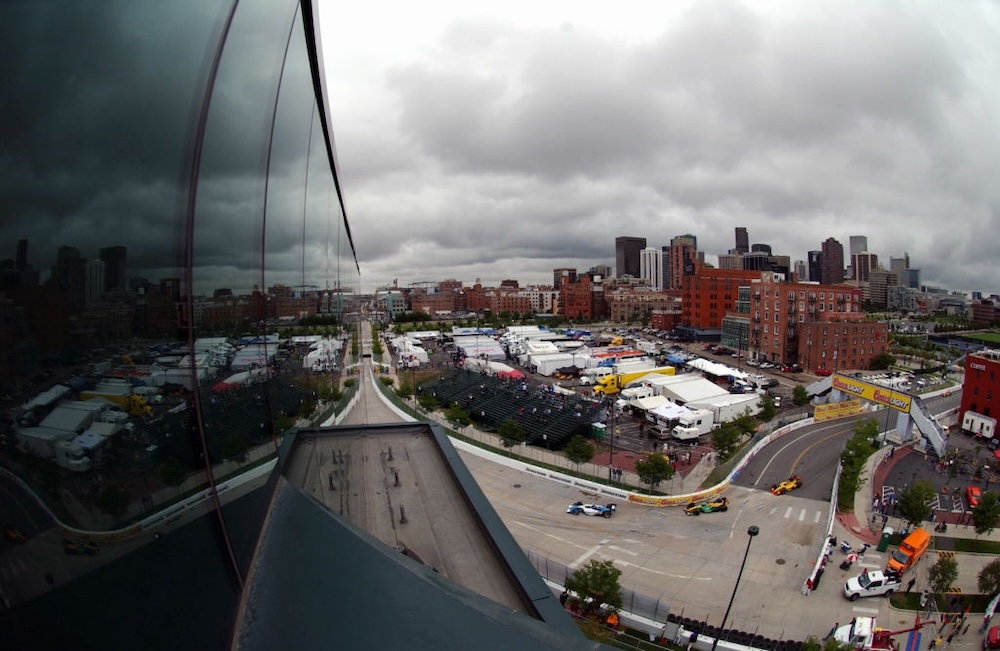
It’s high time IndyCar went back to Denver. Getty Images
Q: I guess you will not have to answer the question of who will have the TV rights for IndyCar for the foreseeable future. I view the Fox deal as a net positive for sure, but what do you think? What impact will this have on the schedule and what tracks are involved? Will this create more interest as far as OEMs and sponsorship?
Brian, Joliet, IL
MP: Extremely positive. What’s the one thing that’s made everyone mad for decades? IndyCar gets treated like a child among adults at whatever broadcaster it was part of prior to Fox. With Fox, IndyCar hasn’t been buried as the fifth- or sixth-most important sports property, and while it will never rise above the NFL, I can see IndyCar receiving a greater level of priority in this new alignment. And within reason, of course.
We aren’t going to see IndyCar blanketed across all Fox channels at all times, but this deal does elevate the series from being an external client to an asset. That’s huge.
Fox has taken on major responsibility with its shareholders to maximize the value of IndyCar. Like its original programming on the main network and its other channels, IndyCar has become part of its ownership portfolio and there are expectations for this property to become a revenue generator. I like the kind of pressure Fox has taken on.
Q: Now that BMW Motorsport has announced its split with RLL, I was wondering what happens to all the BMW cars and equipment in RLL’s possession?
Dave ‘Bring Back the Glen’
MP: Cars go back to the manufacturer after a split, along with anything specific to the cars like spare hybrid units, and so on. But the rest of the support equipment, transporters, and the rest are the property of the team. It’s not uncommon for the current team to hand off the cars to the new team after the checkered flag at the final race.
Q: I feel like the best way to describe my relationship with IndyCar is like an on-again, off-again relationship where the relationship isn’t necessarily toxic, but consistently fails to live up to what I hope it will be. There’s flings with other new and exciting partners (F1, IMSA, WEC), but I keep going back to my ex (IndyCar) every time they present themselves as new and improved (new ownership, new chassis/engines, new tracks, new broadcasters) only to be left heartbroken, disappointed and frustrated when they end up not having changed at all. All my friends and family see the obvious potential in the relationship, but it just never seems to deliver on the promise. And so the cycle continues.
I wouldn’t say I’m optimistic about the new Fox deal, but more hopefully skeptical. Being an IndyCar fan is exhausting. We all know what the series could be, but it seems hell-bent on throwing banana peels in front of itself. I find myself being less intentional about catching the races over the years, missing a few here and there. The seasons feel more like a rerun of the previous year rather than something I can’t miss. It makes me sad seeing empty stands, and angered when manufacturers clamor for other series that have re-imagined themselves while IndyCar has only changed its clothes a couple times in the last 15 years.
All this to say, I desperately hope something changes with this new deal. I’m not raising my expectations, but hopefully this sparks a series of aggressive and inspired changes that turn the sport into what everyone in the racing world knows it could be.
Michael, Halifax, Canada
MP: I hear you, Michael. We’ve gone through some infuriating years where seemingly nothing was done and delay after delay with cars and video games and hybrids and engines and whatever else was the standard story. No vision, no movement, no growth.
And then things started to change last year. Lots of movement with the Fox deal being the centerpiece, plus the development of the Arlington race coming together and the buying of Long Beach to keep that as an IndyCar race, etc.
It’s the work of years, so the timeline won’t be something where big calendar changes happen in 2026, but FOX Sports is very serious about making brand-new events for/with IndyCar, namely street racing festivals. That’s a giant shift from feeling stuck with some of the dogs on the schedule.
IndyCar might need to keep going to some of its weaker performers for a year or two – until a Louisville GP and a Greenville GP can go live (those are just suggestions) – so everything won’t become awesome overnight. But for the first time in a long time, IndyCar might not have to settle with the limited options it’s had to showcase its cars.
It hasn’t suffered from an abundance of tracks and promoters wanting to pay for the series to turn up and race, which explains why the calendar is what it is and why it has been this way for many years. With a motivated new partner who wants to make original IndyCar events, this could be a proverbial game-changer.
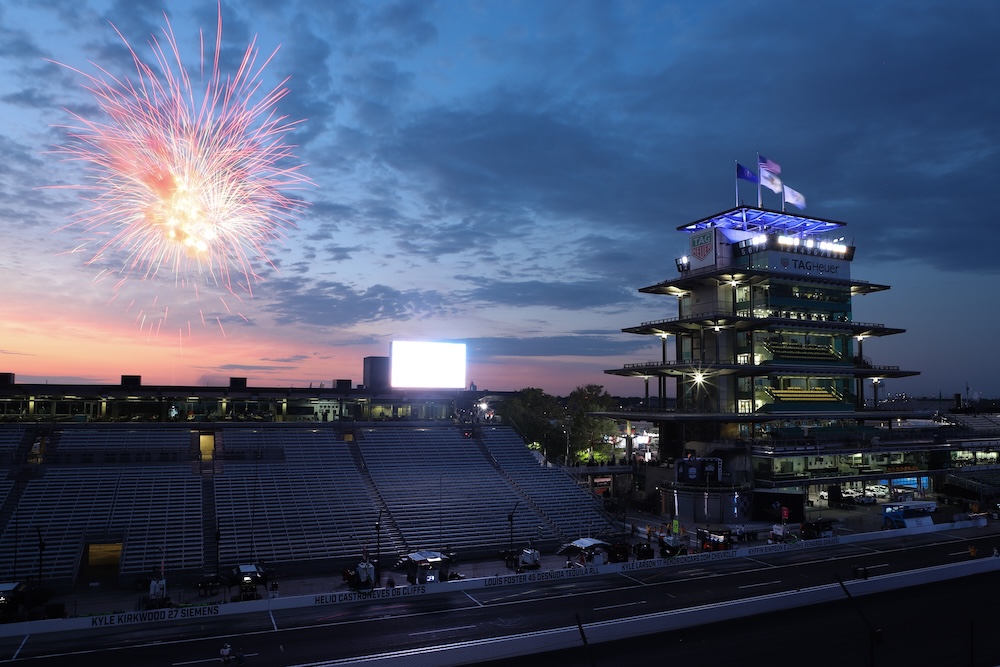
The Fox deal could mean the dawn of a new era for IndyCar. Matt Fraver/IMS
Q: I just finished reading your article about Penske selling a third of the series and Speedway. Wow, talk about Christmas in July. After reading your article I can’t really see a downside. I guess my question is, do you?
John Furnis
MP: Only potential downside is streaming. The glaring need that’s unresolved is finding a large gener al streamer to bring IndyCar to the world. A Netflix or Amazon Prime or similar.
Fox is working on its new Fox One streaming service which is estimated to cost $25-$35 a month, and that’s how fans can get their IndyCar racing from the source. There are other ways as well with YouTube TV and a few more external plans, but for those who liked the Peacock subscription NBC offered to get IndyCar, Fox One is the upcoming version of that from-the-host-broadcaster subscription.
My concern here isn’t so much about the steep-ish cost of $25-$35 a month, but the place that Fox lives in the marketplace. Anecdotally, half the country loves everything Fox offers, consumes the hell out of its cable and network offerings, and will happily pay for the new service. The other half wants nothing to do with Fox and won’t spend a penny on Fox One. And that’s not the kind of barrier I want for the series.
I have no doubt Fox One is going to be a giant success; it has the most loyal viewers of any U.S. broadcaster. That’s not the concern. It’s whether IndyCar’s reach through streaming will be limited to the same folks who already consume Fox’s channels, which might not produce a lot of audience growth for the series. If Fox is open to such a thing, adding a big streamer to carry IndyCar races is where real change becomes possible.
Q: You must have had intel about the IndyCar/Fox deal that was done. Tough to keep that under wraps. We can only hope for positives in the future, not knowing how this will all play out.
However, after the announcement was published, I can hear it play out in a Rush song: Xanadu. Listen to the beginning, and it’s Fox proposing the idea. At the third gong, Penske Entertainent loved it. The deal is then sent to the lawyers and closes the deal when they all start playing.
Technically there was one rhetorical question in there.
Dave, from Lowell, IN, that drank the milk of paradise (or Miller High Life)
MP: I only had a piece of it.
Q: With the exciting news of Fox buying into IndyCar and the great article you have written which ironed out more details, it really makes it feel good to be a fan of the series and know that there will be major investment in the marketing and growth of the series. No, I am not a fan of the racing at most street courses, but this does create the opportunity to fully immerse new fans into the series.
My question, though, is on ways that this could help for a return to some ISC-owned tracks. There is no doubt that Fox is NASCAR’s biggest media partner and that their biggest race is on Fox. Would this create the opportunity for IndyCar, through Fox, to leverage that to negotiate returns to tracks such as Watkins Glen, Chicagoland, Michigan, etc., in exchange for Fox giving NASCAR more broadcasts on the big FOX?
Does this open the opportunity for more IndyCar coverage leading into NASCAR coverage or vice versa (always seemed like a winner for both IndyCar and NASCAR)?
And lastly, would this create the opportunity for both series to have a doubleheader weekend during the early part of the season? The future is bright, and I’m fully vested in where the series goes!
Alan Bandi, Sarver, PA
MP: I’m viewing this from a different perspective. FOX was NASCAR’s best friend, or at least that’s what it looked and felt like to me, and then the announcement came last year that in NASCAR’s new media deals, FOX would be losing races, seeing the Cup season end earlier on its channels, and new players were being prioritized and given some of its dates.
Fast forward to the IndyCar on FOX announcement, the placing of IndyCar on network 100 percent of the time, and now the one-third purchase by Fox Corp.
This reads to me like Fox Corp/FOX Sports has reacted to the change in relationship on the Cup side by going all-in with IndyCar and making IndyCar its home series – its in-house racing product that can’t be taken away – to take to new heights.
Rather than seeing ways to mingle IndyCar with NASCAR, I’m convinced Fox sees IndyCar as something to build into a real rival to take on Cup because there’s no other reason to buy into the product. IndyCar doesn’t generate a meaningful profit as it stands, so turning it into a much bigger property and reaping the benefits of a rise in value is all that makes sense to me.
I could be wrong. But I don’t envision Fox as being a relationship builder between the series. I think Fox has a meaningful stake in a series it loves and isn’t at risk of losing to other broadcasters.
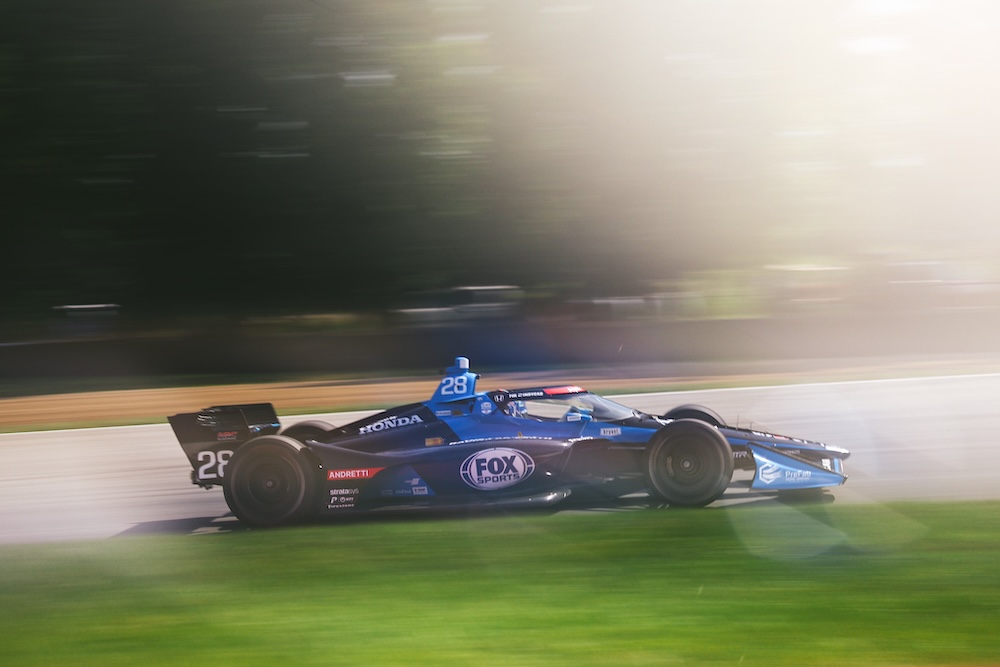
Fox’s investment hints at big plans for elevating the series in the future. Chris Owens/IMS
Q: I am fine with Fox buying a third of Penske Entertainment. My concern is that the Indianapolis Motor Speedway is now part of that purchase. I wish that IMS was split out. I wonder if there is some caveat in the contract that prohibits Fox selling all or part of its third?
Joe Mullins
MP: As soon as Roger stops by for a beer to show me the contract, I’ll report back in the Mailbag!
Q: I’ve proposed this before, but I’ll expand slightly.
When a full-course caution is needed, throw the yellow flag immediately. Give the drivers three seconds (or whatever is reasonable) to engage the pit lane speed limiter. Close the pits only until the leader arrives, giving the leader first chance to pit. Once the leader has entered, or passed the pit entry, the pits would be open for everyone.
This keeps the relative gaps until the pit cycle. The pace car would pick up the leader and the rest of the field at pit-out, whether or not they pitted.
This would prevent leaving a wrecked/stalled/spun driver, on or off track, exposed by immediately slowing the field. It would prevent drivers from getting hosed by a yellow, since the leader has the first option to pit. It makes the pit lane safer for crews since the cars are not coming in and leaving all at once. The systems to implement this procedure already exist in the car, other than maybe monitoring by race control. It is consistent and predictable.
This solution seems obvious and completely do-able, but has never been utilized to my knowledge. Which means I’m probably missing something. What am I missing?
Tim Hubbel, Gypsy, OK
MP: Missing nothing, Tim. Just needs a willingness for the series to give it a try.
Organizing a “We’re gonna give a bunch of officiating ideas a try” test on the IMS road course, with all of the EM Marshaling panels and technology in place, would seem like a great thing to consider during the offseason. Invite one car per team and spend the day running through scenarios like you’ve suggested. Debrief in the moment, make adjustments, take feedback, and go back out to try it again with revisions and see how it works.
Invite a blend of veterans, some newer drivers, and drop a few NXT drivers into the cars to get truly new viewpoints while giving a few kids some easy mileage in an IndyCar.
Q: My knee-jerk reaction to Fox purchasing a large stake in IndyCar and the Speedway is that it is not a good idea for a media company to own a sports league. Fox, which has zero institutional respect for the traditions and history of IndyCar will, I’m afraid, seek to change the sport that will negatively impact the purity of the racing and competition rules all to gain ratings. Like, gimmicky competition rules, car changes, silly AI video effects, etc.
Thoughts?
Andy R, Detroit, MI
MP: I don’t share in your fears. If the argument is to keep IndyCar as it is and stay in the shadows, yes, Fox is a threat to everything remaining the same. I don’t know what the changes will be, but the best version of IndyCar I’ve experienced with cars and events that were simply amazing, also coincided with IndyCar being at its peak popularity in its CART IndyCar Series days.
Almost everything about CART was different from what we have today. Lots and lots of change has happened along the way to get us to today’s car, events, and approach to racing. So I’m not afraid to see more change, since the biggest and best version of IndyCar was extremely different to the current product.
Q: When the IndyCar drivers show up at an oval like Iowa, which was basically a ghost town, what do they think? Are they concerned about the lack of people, or the state of oval racing in IndyCar?
Jerry, Houston, TX
MP: For those who think of themselves as part of the solution, yes, of course they’re saddened to see they’re performing in front of empty seats and are aware the empty seats represent a rejection of the workplace where they earn a living. I’m sure it’s the same reaction among actors when a big movie debuts in theaters and they learn it was a box office failure.
Q: Two questions this week, and one of them not surprisingly to do with the Fox news:
First, all things considered, do you think IndyCar is in a good place as of right now?
Second, since I’m Swedish, and slightly biased, if you were a betting man, would you place a wager on Linus having an IndyCar ride for 2026?
John A
MP: Spoke with a team owner last week who told me they plan on having a follow-up meeting with Linus at an upcoming race and they were very keen to see what might be possible for 2026.
Yes, I do think IndyCar is in a good place. Unrelated to all of the latest news, a significant item that needs to be addressed is costs and reducing the ongoing rise in annual budgets. That’s creating a lot of anxiety.
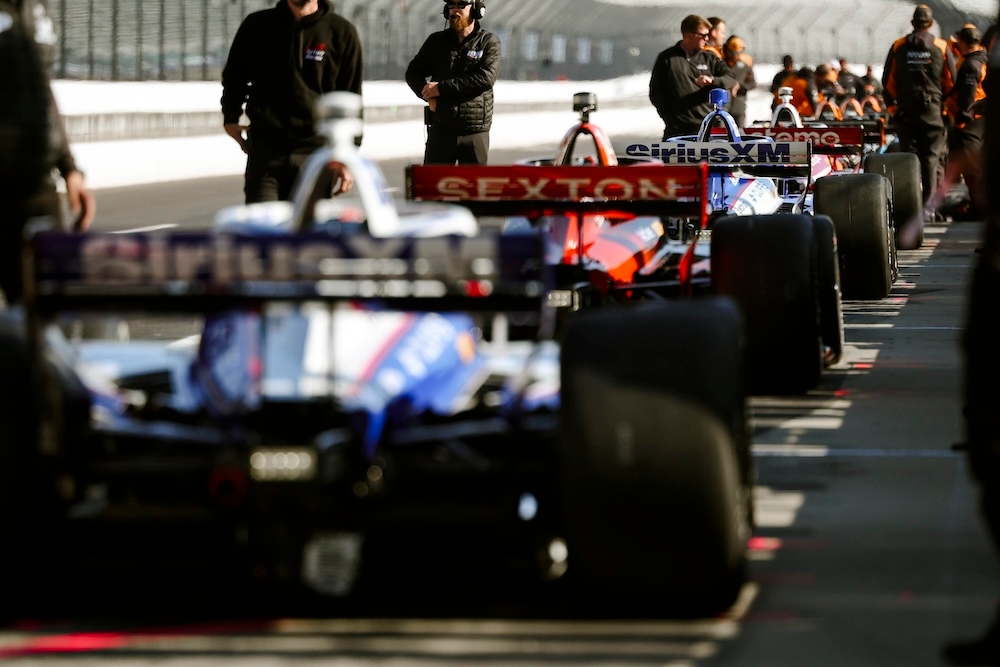
There are plenty of reasons for optimism in the IndyCar paddock, but rising budgets remain on ongoing concern. Chris Owens/IMS
Q: The day before the Fox announcement I was sent a rumor from a usually reliable source saying that Fox had been sniffing around FloRacing’s content, predominantly with a look to acquire a controlling interest in USAC. I didn’t put much stock in it, but the news of the partial acquisition of IndyCar makes me wonder if there’s more to it?
Fox getting IndyCar and USAC would be a big deal in the historical sense, but USAC is also in the best position to get something set up to help address what I’ve always felt is IndyCar’s biggest headache for attracting fan interest in big speedways – lack of support race options.
So I turn to you: Did you ever hear anything about this? Is there even the remotest possibility of this one being true? Maybe this was just something Fox was looking at before the partial purchase of Penske Entertainment became possible? It’s an interesting “what if,” at the very least.
